Writing a Cover Letter Header This Year
Your cover letter heading provides lots of important information. Here’s how to make sure your header is perfectly presented.
Your cover letter heading provides lots of important information. Here’s how to make sure your header is perfectly presented.
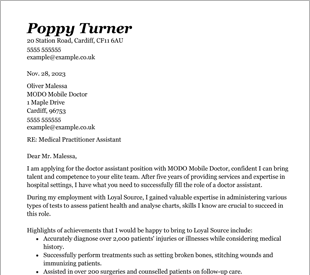
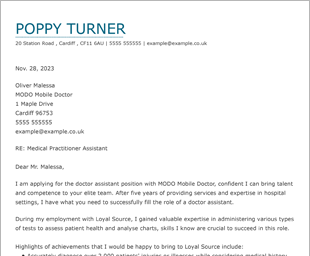
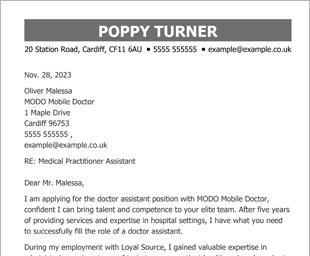
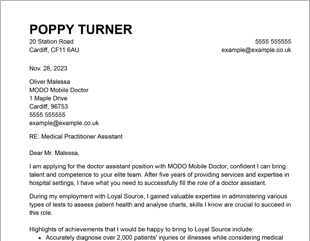
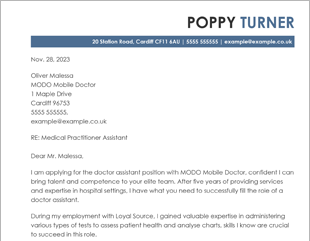
OUR USERS HAVE BEEN HIRED BY
The cover letter header is located at the very top of a cover letter, and because of its position, it’s usually the first thing to catch the eye of hiring managers. The right cover letter heading will help you to stand out from the crowd of job applications a recruiter has to wade through in order to fill any position. So as you can see, it is important that you get your cover letter header right.
While a cover letter header takes up minimal space, there are a number of important elements it must contain in order to be effective. These elements can be personalised to suit the needs of your job search, but in their most basic form, they are:
It is important that you include your full legal name in your cover letter header. This is so hiring managers know who to address if they decide to follow up and contact you.
You should include your mobile phone number as well as your landline number (if you have one).
It is good practice to include your professional email address in your cover letter header in case this is the company’s preferred method of communication. A cover letter and CV are not the places to use a cute email address that can get misinterpreted by the hiring manager.
If you have professional social media profiles, include them in your heading. Providing details of your LinkedIn profile can help hiring managers build a better picture of your skills and abilities as well as your professional network.
As you can see, it is important to include all of your contact information in the cover letter header. There are also some optional elements you can include, but they’re not mandatory; include them only if you think they will be of value to an employer:
Including your current job title can be useful, but it is not necessary.
You don’t need to include your home address in your cover letter header unless you expect to receive a written response to your application. If you do, it can be helpful to provide it.
If you have other professional social media profiles or you have an online portfolio, providing links may be beneficial.
Remember that your cover letter header is only a small part of your document, so make it concise and clear. This is especially important to help your cover letter and CV pass through applicant tracking systems (ATS) that will scan them – any unusual layouts or formats can confuse ATS. These principles apply to the rest of your cover letter format—if you want to give yourself the best chance of success, you should also look at a sample cover letter or two for inspiration. CVHelp has a wide range of cover letter examples available.
The way you format your cover letter is very important to grabbing the hiring manager’s attention and making a good first impression. From your salutation to the body paragraphs, there are standards for each section of the letter. If you are sending an email cover letter, for example, the subject line is key and should include your full name as well as the job title you are applying for.
There are a number of formatting tips you should consider when creating your cover letter. These include, but are not limited to:
When writing your cover letter, you should choose a professional and legible font, ideally one that matches your CV. A Sans serif font like Arial or Calibri is acceptable.
A professional document should have margins of one inch all around, but if you need more space, a half-inch is acceptable.
The perfect cover letter format is one that balances white space and breaks up the body paragraphs to prevent a wall of text from forming.
These cover letter tips will help with proper formatting, but don’t neglect elements like your salutation and content. No matter how pretty your cover letter looks, “Dear hiring manager” is not an ideal way to start it. It’s better to direct your cover letter to the specific hiring manager’s name if available. Because you need to create a unique cover letter for each job application in order to impress a potential employer, it can be beneficial to use a cover letter template or builder. CVHelp has a cover letter builder and a range of cover letter templates that will help you create an editable cover letter effectively.
Your cover letter header indicates who you are and makes it easy for the hiring manager to contact you. A secondary function of a cover letter header is to standardise a job seeker’s documents. If your letter has a similar “look” to CV, it can give your job application a cohesive appearance and maintain professionalism.
The right header is a crucial part of any cover letter because it not only makes sure the cover letter looks good but also ensures an employer gets crucial contact and profile information. If you don’t have a header on your cover letter, recruiters are likely to notice, and this will have a negative effect.
The best way to design an effective and consistent header for your cover letters is to use a cover letter template such as the ones available via CVHelp. Having a professional, editable template to work with will make your job search much less time-consuming and produce better results.
We personalize your experience.
We use cookies in our website to ensure we give you the best experience, get to know our users and deliver better marketing. For this purpose, we may share the information collected with third parties. By clicking “Allow cookies” you give us your consent to use all cookies. If you prefer to manage your cookies click on the “Manage cookies” link below.